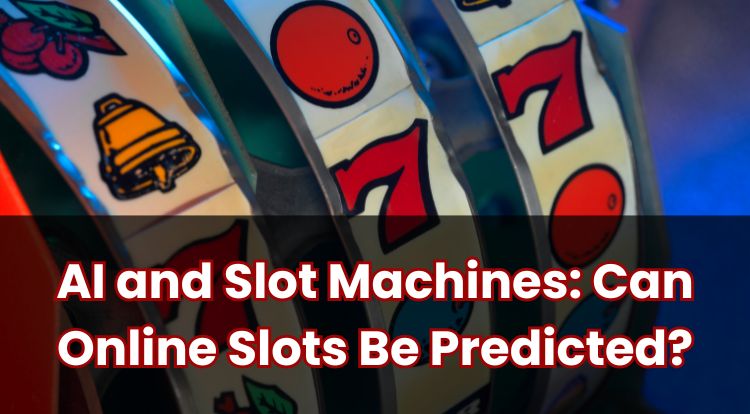Is AI Accurate in Predicting Football Match Results?
Artificial Intelligence (AI) seems to be everywhere right now, including in football predictions. It offers new ways to look at scores and possible outcomes by handling far more information than a person might manage on their own.
But how much can these systems actually tell us about what might happen in a match? And what should we make of the numbers they provide? This article looks into how AI forms its ideas, the kinds of information it uses, where it can be useful, and where it might fall short.
Keep reading for a clear-headed view on how dependable AI predictions are in football.
How Does AI Predict Football Match Outcomes?
AI works by analysing large amounts of information and spotting connections between team or player details and what happened in previous matches. The programmes involved—often called models or algorithms—turn these inputs into chances for each possible result, such as a home win, a draw, or an away win.
It usually begins with gathering data. This might include recent results, whether certain players can take part, the formation the team uses, and other factors like expected goals or the advantage of playing at home or away.
Then, the model looks for repeating patterns. For instance, it may observe that some formations tend to create more chances, or that a team doesn’t perform as well when a particular player is missing. There are many ways to build these models, from straightforward rating systems to more complex machine learning techniques that can find subtle links.
The system isn’t fixed—it’s updated regularly as new matches happen and is checked to avoid simply memorising old data. It also needs to make sure its chances align well with reality, so if it says something has a 60% chance, it should be about right more often than not.
The numbers it produces show likelihoods, not certainties. They can change when fresh details emerge, like a last-minute injury or a change in the team’s line-up, which is why forecasts sometimes shift before kick-off.
AI Predict Football Match: What Data Is Used?
AI looks at many types of information to build a detailed picture of a fixture. Some of it is straightforward, like past match results, but much depends on how these pieces fit together.
At the team level, this might include recent performances, how well they play at home versus away, the style of formations, and factors like set-piece strength.
On the player side, it considers who is on the pitch, minutes played recently, injuries, and contributions like expected goals or assists.
The context of the match also matters. This includes how many rest days teams have had, travel involved, weather or pitch conditions, and even how referees tend to manage the game.
There are also more specific details, such as how two teams have historically matched up, substitutions made during a match, and how a team’s approach shifts when they are leading or behind.
Not all these data points carry the same weight; some can be unreliable or incomplete. That’s why it’s important to clean the data carefully and choose the most relevant details. The overall goal is to combine what’s known into a set of chances that best reflect how the match might go.
Can AI Models Be More Reliable Than Traditional Statistics?
Older methods often use a handful of straightforward measures, like average goals or shots, or a simple statistical model to estimate outcomes. These are easy to understand and can work well in stable situations.
AI tries to do more by bringing many signals together and spotting relationships that might be missed with simple averages. For example, it might notice how a team’s pressing style interacts with the opponent’s way of building attacks or how rest days affect a high-energy formation.
This wider approach may be helpful, but only if the data is accurate and the model is well-designed. More complexity can also bring challenges, such as the model being too tailored to past data or producing probabilities that don’t quite match what actually happens. Sometimes, a clear, simple method outperforms a more complicated one because it is more consistent and less sensitive to errors in the data.
Many experts combine both styles: they start with a solid traditional model, then layer in machine learning where it clearly adds insight. This balance leads naturally to the next question: what limits AI, even when it’s well made?
What Are the Main Limitations of AI Predictions?
The quality of data is always a key issue. If inputs are missing, out of date, or measured incorrectly, the results won’t be reliable. Football has areas where data doesn’t fully capture the picture—like quiet injuries, unexpected tactical changes, or last-minute team announcements.
Also, because football doesn’t see many goals, a single event can change everything. Things like red cards, lucky deflections, or a goalkeeper’s outstanding performance can override the forecast, even if it was reasonable before the match.
Another challenge is that teams change over time. Managers try new systems, players develop or lose form. A model trained on last season’s data may become less relevant if it isn’t regularly updated to reflect these shifts.
It can also be difficult to explain exactly why a complex model makes a certain prediction, which can affect how much trust people place in it, especially if its output clashes with knowledge that isn’t fully captured in numbers.
Do AI Predictions Help Bettors Make Better Decisions?
AI can help by turning a lot of information into clear probabilities. That clarity lets people weigh a view against their own reading of team news, form, and tactics. For instance, seeing a home side priced as a narrow favourite with a 52 percent chance might help guide a decision, but it should still be treated as an average over time, not a promise about one match.
Where AI often adds value is consistency. It applies the same logic every time, which can reduce common biases like overreacting to a single headline result. It can also highlight details that might be missed, such as a pattern in how a team fades after 70 minutes when fixture congestion is high.
Predictions should not be the only factor in any decision. If you choose to bet, keep it within a set budget, use the available account tools, and take breaks when needed. No model can remove uncertainty, so it is sensible to view any forecast as one input among many.
That naturally leads to a comparison many people wonder about: how do these systems stack up against human experts?
How Accurate Is AI Compared to Human Experts?
AI doesn’t tire and works consistently, which might be beneficial in settings where detailed and up-to-date information is available, such as the top leagues. It can quickly detect subtle statistical patterns and is less influenced by popular stories.
Human experts add value by considering things that numbers can’t always capture. They can interpret factors like team harmony, a manager’s plans, or tactical experiments that haven’t yet shown clear results in statistics. In lower leagues or teams undergoing quick changes, this insight might make a real difference.
Studies across sports suggest that combining model outputs with expert judgement often produces better outcomes than relying on either alone. Analysts might begin with AI probabilities, then adjust based on strong, specific details the model hasn’t yet taken in—like a tactical shift or a key player returning but playing limited minutes.
The accuracy of both approaches can vary by match or league, and neither is consistently superior. Usually, the best approach blends data and human understanding.
The Future of AI in Football Match Predictions
AI in football is evolving towards richer information and more flexible models. Advanced tracking technology now maps how players move and position themselves, which helps show pressing triggers, space creation, and off-ball runs—things standard stats might miss. As this data becomes more common, models can describe how teams play, not just what scores were.
Live updates are also improving. Systems that adjust chances as team news comes in or as matches unfold can provide a clearer picture of what’s happening right now, rather than relying solely on pre-match expectations. Improved methods also help make the chances match what actually happens more closely.
Two promising directions stand out. One is models that separate cause from correlation, like isolating the true effect of a formation change rather than just noting a better opponent. The other is simulation methods that run many versions of a match using realistic event patterns, showing not only likely outcomes but also how those results might develop.
No matter how advanced, predictions remain likelihoods rather than guarantees. If you choose to use them to inform any betting decisions, remember that outcomes can never be predicted with complete certainty.
**The information provided in this blog is intended for educational purposes and should not be construed as betting advice or a guarantee of success. Always gamble responsibly.




